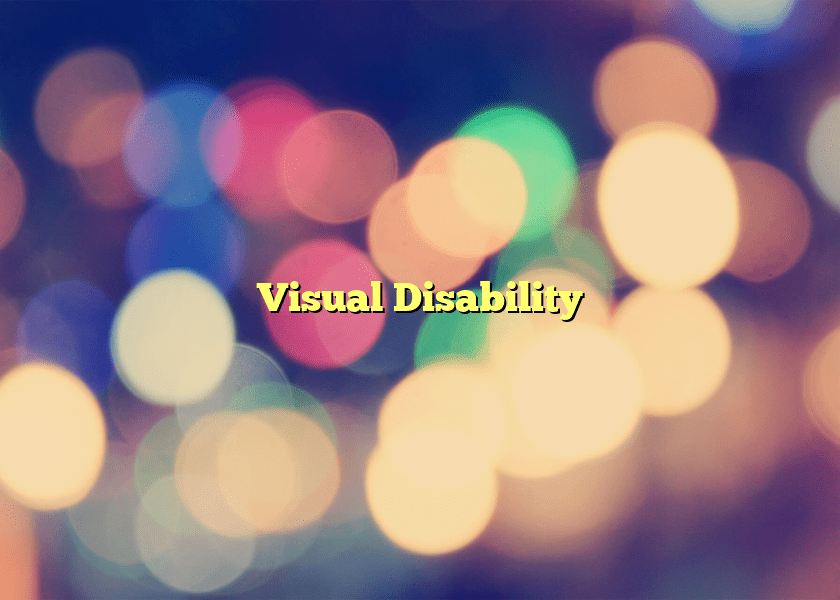Visual Disability
Visual disability is one of the most common impairments that many people from around are suffering from. In spite of the laws that have been passed to help improve the lifestyles of those with disabilities, these people are still faced with many difficult challenges in their daily lives. Visual impairment can be very disabling to some people, while other got used to their condition.
But, what really is visual disability? The term visual disability has a wide-ranging description. It is possible that a person who has difficulty reading, but still able see things just fine. Some people may not be able to distinguish shapes and colors while others may have vision that fluctuate as a result of a particular disease. You are considered visually impaired in you don’t have normal vision despite the use of eyeglasses or contact lenses.
Visual disability can be caused by several eye diseases such as age related macular degeneration, diabetic retinopathy, cataracts – a condition where the lens of the eye slowly becomes hard and opaque, and glaucoma – abnormally high pressure of fluid inside the eyeball that result in the disturbance of vision. Or, you may also experience vision loss after accidents or inherited ocular disorders that can’t be corrected medically.
Visual disability is divided into two categories: blindness and low vision. A person with blindness, there is totally no sight or has very little that learning has to depend through senses. There is a certain level of impairment that is called as legal blindness. Legal blindness should not be confused as total blindness, because most of the people with legal blindness still have some useful vision. You are considered legally blind if visual acuity 20/200 or worse in the better eye with glasses, or a visual field that subtends to an angle not greater than 20 degrees. People with low vision have severe impairments and need special accommodations, though are still about to learn through vision.
Visually impaired students may have difficulty learning in a typical classroom environment due to their condition. But, these barriers can be conquered by providing students with assistive disability devices. Students with visual disability can use different assistive tools such as:
§ Enlarger or Closed Circuit Television – this is a magnification device that enlarges and projects printed materials onto the screen of your television.
§ Braille ‘n Speak – it is an input/output device that acts as a Brailler. Students can make use of this tool for many purposes such as note taking, writing papers, or doing assignments. Braille ‘n Speak can also be connected to your computer to be used with different software programs or to print to a Braille computer. MegaDots and Duxbury Braille Translator – Braille translator software programs used to input and translate text. These programs can make printed text available by means of a scanner.
§ Scanner – this equipment can provide access to printed materials in order to bridge the gap between printer and computer. It can also be used in conjunction with screen magnifiers, screen readers, and voice input devices. You might also need certain software programs such as VisAbility and OmniPage to simplify and speed up the process of scanning.
